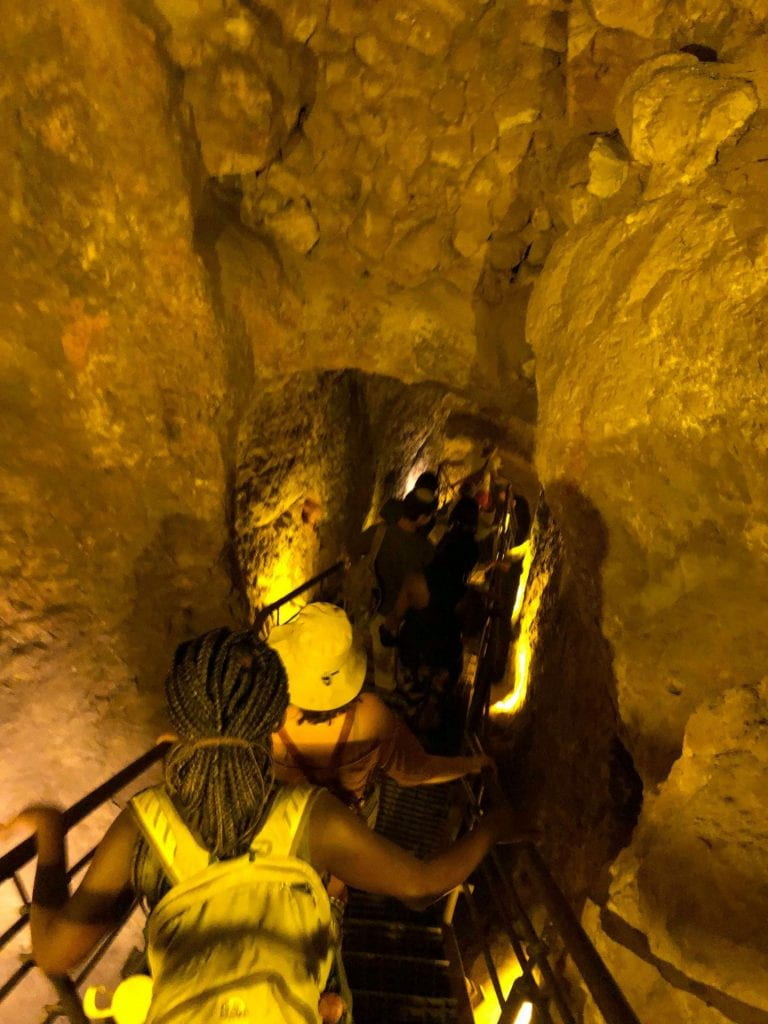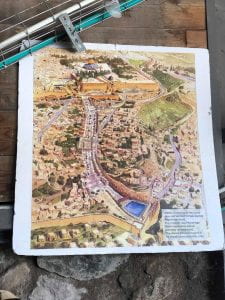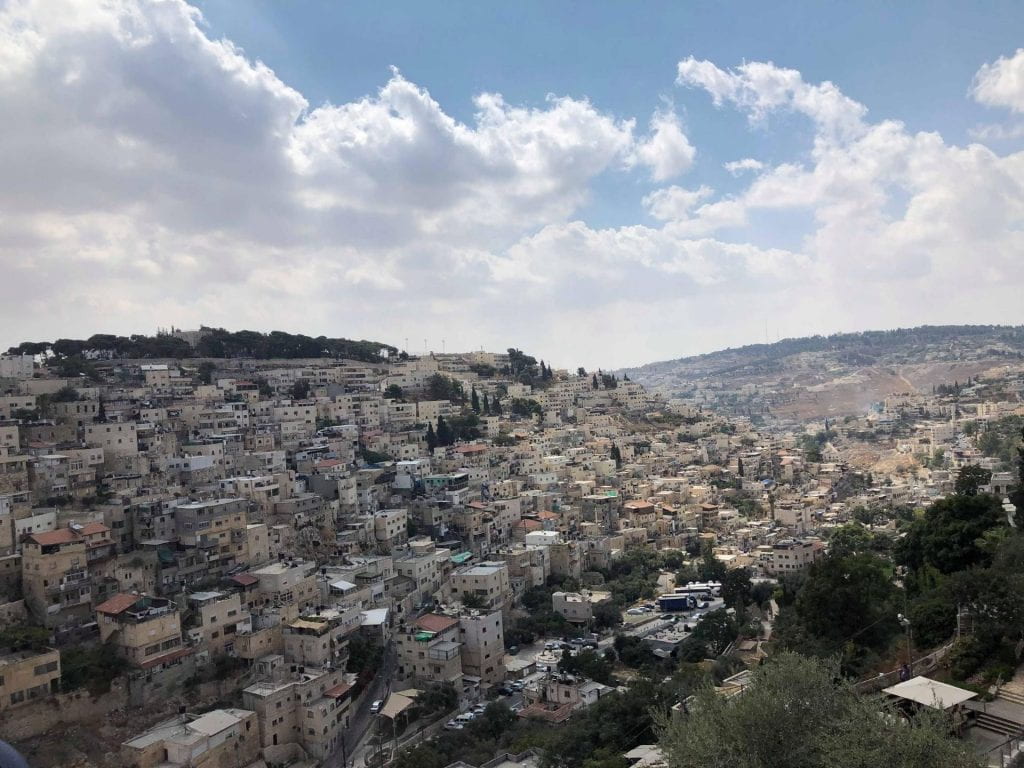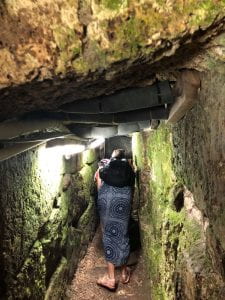King Hezekiah’s Tunnel
By Alexandro Reyes
On Sunday, September 15th, we left Masada and made our way to Jerusalem, where we would learn about the water systems there. Upon arrival, our tour guide was quick to enlighten us on the history of Jerusalem through archeological evidence collected over the past centuries. The main highlight of this tour was entering Hezekiah’s Tunnel, also known as the Siloam Tunnel. This tunnel is a water channel underneath the City of David which is in east Jerusalem. For a city to thrive in this time period, water, food, and protection from outside threats were essential for success. King David had the rule over all the village of Jerusalem and was able to fortify his city shortly after. The city had walls protecting its citizens and housing; however, their water supply lied shortly outside the city walls. King Hezekiah saw this as a potential weakness as he was preparing for an attack from the Assyrians; an enemy force could use the Gihon spring as a source of water during the attack or could even contaminate it, which would severely cripple the City of David. He devised a plan to move the water from the spring closer to the city through Hezekiah’s Tunnel.
This tunnel is about 580 yards long and had about a 0.06 percent gradient, which allowed the waters from the Gihon Spring to flow within the city walls. The tunnel was constructed by two teams, each one starting at different ends of the tunnel and then meeting in the middle. Based on the path of the tunnel, experts concluded that there were many directional mistakes when constructing it. The tour guide emphasized the difficult feat of excavating such a precise tunnel with such little technology at their disposal, which is still not understood fully. Some experts believe that the two groups of workers were directed from above by echoes in the tunnels generated by hammerings on the surface.
We all walked through this tunnel, some were excited and others … slightly frightened. The water inside was fairly cold and was about two feet deep at its deepest. Since humans were on average shorter, the tunnels were carved only to suit the height of fairly small people. This made walking through the tunnel slightly difficult if you were over 6’0” like myself. The walls of the tunnels were moist and the ceiling of the tunnel ranged from about 5’ to 15’. It was estimated that the tunnel was fully excavated in a little under a year. It was worked on 24/7 until it was complete, and workers got through about three to four feet a day. This tunnel is proof of the engineering ingenuity exhibited by the people of the City of David.






Very good article thanks for your efforts